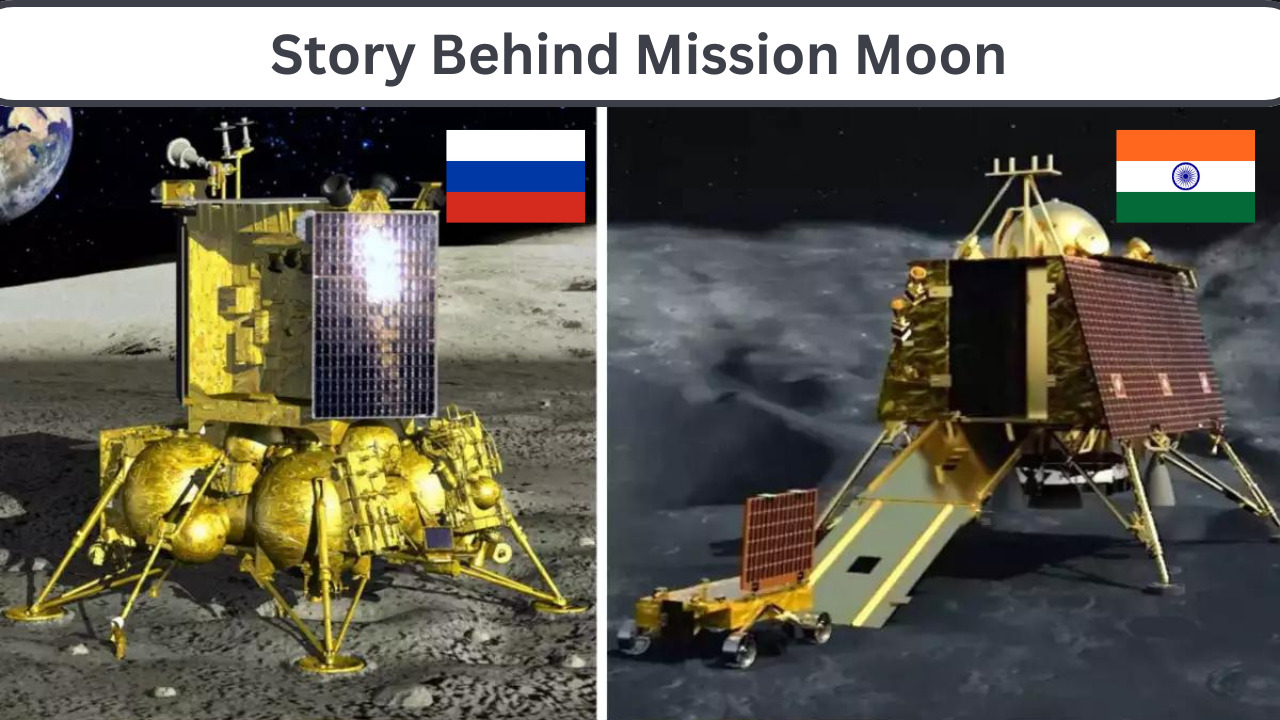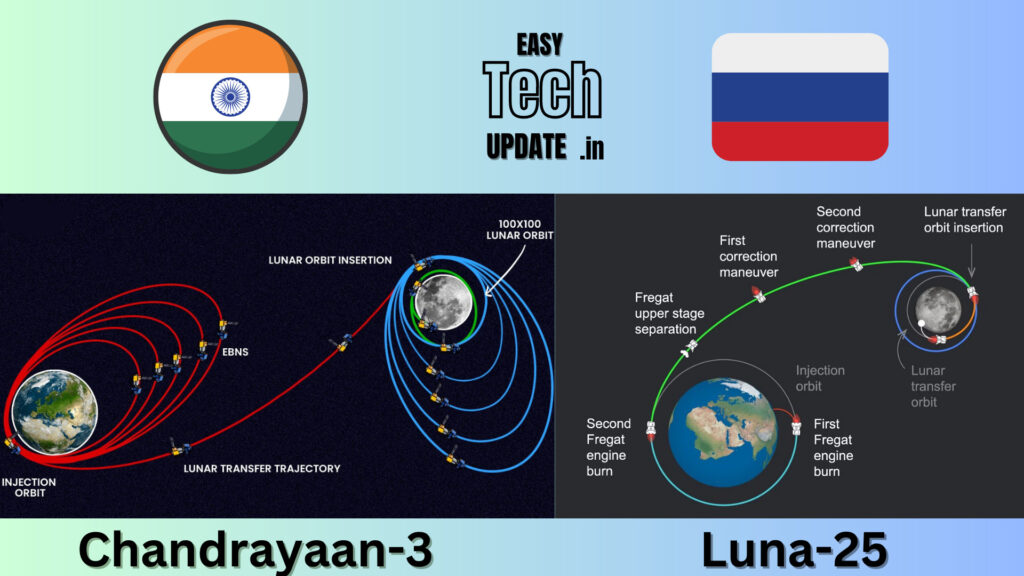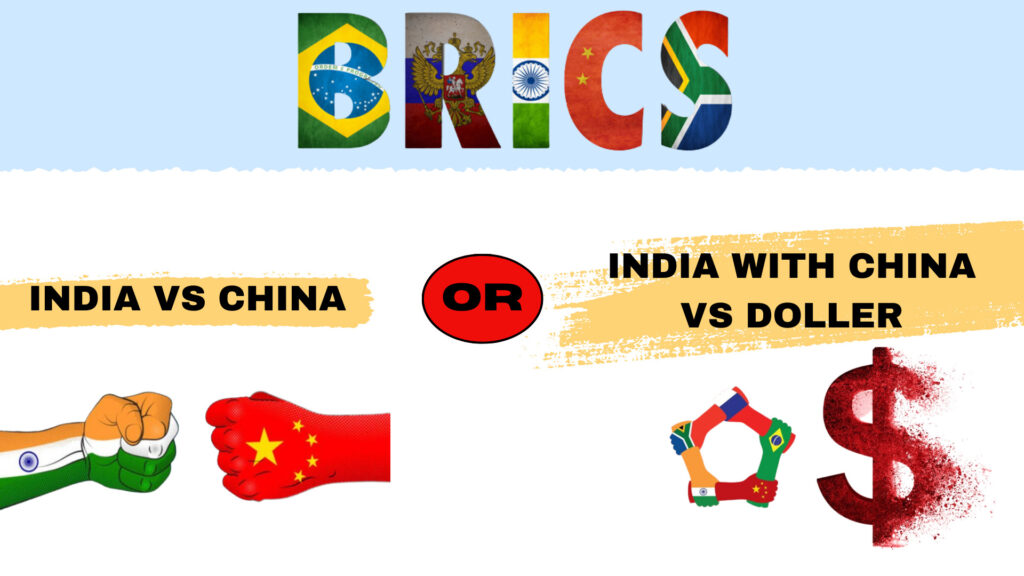Why Luna-25 is faster than chandrayaan-3. India and Russia, are they friends or foes? Russia has launched its lunar mission after almost 50 years named Luna-25. Exactly at the same time when India’s Chandrayaan-3 too is going to the moon, and Russia’s plan is to reach the moon before us. Is it a coincidence or is it a message?

Around a month ago India launched Chandrayaan-3. Now the thing about to unfold is the moon missions of India and Russia are going to land on the moon around the same time. There is very strong competition in this race but are the real players of this race only India and Russia? Who are the exact players of this race? How can Russia, even after launching a month after India, can reach the moon so fast? Is this race just a space race, or is it related to geopolitics as well? Russia has better technology, more budget and experience of years. Does India have any advantage?
Let’s see..
How is Russia so fast ?
14th July 2023, around a month ago India launched Chandrayaan-3 and India successfully reach to moon, It is a matter of pride for India. Our moon is 3,84,000 km far from earth and to cover this distance, Chandrayaan-3 took around 40 days to land on the Moon on 23rd August, 2023. But Russia just launched its lunar mission, in August, around a month after India. Experts believed that Luna-25 would reach the moon before Chandrayaan-3. Yes it is true but Luna not able to land softly and crashed before the landing as per the news.
Where does this logic come from? Is the moon closer to Russia? The job for which India needed 40 days, how can Russia complete that job in 10 days? How can Russia go so fast? Come let us understand the reasons.
Reason 1
The biggest reason is Vitamin-M Means money. The budget of Chandrayaan-3 is ₹615 crore. In comparison, the budget of Luna-25 is more than ₹16,000 crore. Due to the low budget of Chandrayaan-3, India do not take a direct route. Chandrayaan-3 take a longer route. At the same time, last time the Chandrayaan-2 mission was launched with the objective of soft landing on the moon but India failed in the last leg. So this time ISRO cannot take the risk of failure. Using complex braking maneuvers, Chandrayaan-3 will gradually slow it’s speed.
Reason 2
The second reason is fuel. Russia’s Soyuz rocket is one of the most powerful rockets in the world, whose cost is double than PSLV-C3 and till date this rocket has done more successful launches than India. In terms of experience, power and technology, Russia is far ahead of India. The thrust required to reach the moon can be produced by the Russian rocket itself. Where Chandrayaan-3 have to take the help of Earth’s gravity. Where Chandrayaan’s and Luna’s route looks something like this,

Reason 3
The third reason is that Chandrayaan-3 is heavy, at the time of lift-off Luna’s mass was 1750 kg, whereas Chandrayaan-3 was more than double of that. Means a mass of 3,900 kg is getting transported to the moon. Chandrayaan along with the lander also has a rover. Which after landing on the moon, can cover more area. But Luna only has a lander, not a rover. Our mission will be active only for 14 days and Russia’s for a whole year. That’s possible due to higher power supply and better thermal control system. Better technology, more money, and less payload, due to the combination of all these, Luna is faster than Chandrayaan-3.
Russia’s agenda
Going by the looks of it, the Russian mission and India are quite similar, landing side is same, around dates are also same and our most important objective is also same WATER. On the South Pole of the Moon, there may be a high concentration of water ice. From this water, we can get hydrogen and oxygen. Due to which in the future drinking water, breathable air, and even rocket fuel can be produced.
Luna would had been landed on a such a moon crater that is some 500 km away from the South Pole. There is no rover in the Luna mission. So after landing, there is no possibility to move here and there, So the location of the landing is very important. There’s a robotic arm had attach in the Luna mission, Which can dig down to 50 cm and find traces of water. Photos of the lunar surface would had been took, the impact of solar wind on moon would had been studied. Laser reflectors will be placed, So that the distance between moon and Earth can be measured accurately. With that for the upcoming space missions, Russia has to test new technologies back-to-back in 2024 and 2025, Luna-26 and Luna-27 are also going to be launched.
China, in 2030 wants to send it’s astronauts to the moon In which this Russian data will prove very important. In moon landing, China’s track record is very good. In 2013 and 2018, China did a moon landing successfully talking about politics, the biggest rival of China and Russia is America. After 1972, no country tried to send astronauts to the moon. But now America is going to send astronauts and the destination is also the same, the South Pole. That is, if you want to go to the moon, you have to take such a big risk. Then there is only one area, which is worthy of this mission. The South Pole of the moon. Russian scientists also believe that this mission is quite risky, In which the chances of success are only 70%. Spending 16,000 crore to take such a big risk is not an easy thing.
Geopolitics
The roots of every space race are hidden in geopolitics. Russia, in 47 years, never sent a lunar mission, So why now? Reason is not just space, reason is a message. A message that Russia wants to give to the whole world, especially to America. Today, America considers only and only China as its real rival. In the 1990s after the collapse of the Soviet Union, America captured the position of the world’s only superpower. But today’s Russia is a reminder to America that just 30 years from now, they had given a tough fight to America. Today China and Russia together can beat America in every field. In the history books, America is always considered as the king of space. But Russia started the space race. Then be it Sputnik, i.e., the first space satellite or Yuri Gagarin, the first cosmonaut.
Today, through the Russia-Ukraine war, Russia has established that they are still ambitious. And these ambitions are not just limited to Earth’s territory. They will not sit quietly with a loser’s tag. Then be it Cold War, geopolitics or be it space war. Russia is still as competitive as it used to be during the Cold War. The proof of this is in some details are below.
Earlier Russian rockets were launched from Kazakhstan’s base and Luna-25 has actually been launched from Eastern Russia. That is, Russia, despite Western Sanctions can also handle challenging projects like space missions. Where economists around the world predicted that Russia would lose the perception war, and then it will self-destruct by getting bankrupt, for them this risky project of ₹16,000 crore, is a befitting reply. This is a very big message, for America as well as for India, that in terms of technology, Russia is miles ahead from a developing country like India. It is faster than us and also advanced. At the same time for the people of Russia, it can be a proud moment. For the last year and a half, due to the Russia-Ukraine conflict, the people of both the countries faced a lot of uncertainty. Perhaps this space mission can be a relief for them. If it’s a matter of perception, of power, of technology so Russia is not only racing with India but also, with America and China.
Can India win the race ?
If you look at the data, see the previous experience, then it seems, yes. Russia would have been reached the moon before India But scientists around the world say that for Russia, without a rover, landing in one place, by digging only 50 cm, getting water is next to impossible and India has better chances of making this mission successful. After the failure of Chandrayaan-2, India have learned a lot. ISRO chief S. Somanath says, that if the sensors would had been failed this time, if the engine would had been failed, even then India would had been able to safely touchdown. If only it was about national pride, then after Chandrayaan-2, within in 6 months India could have launched the next mission. But India waited, Improved Their algorithms and launched now, in 2023, when Indian scientists were fully prepared. This is proof that India is not interested in any race.
The answer to whether India can win the space race depends on where they draw the finishing line. Which achievements do India consider as real achievements. If only reaching first means winning the race, then the race has ended long ago. Because America got to the moon 50 years ago No one should try afterwards, right? But if landing on the moon at the lowest budget is a victory for India, then yes, India win this race. If learning from failure is to move forward, then Yes, India can win this race. The focus of India, the media, and all the people should not be on who reaches first, but on how efficiently they achieve their goals.



